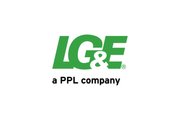
It was the champion boxer Joe Louis who is attributed with the statement, “He can run, but he can’t hide.” “He” is Billy Conn the lightweight challenger to heavyweight champ, Joe Louis. Conn was fast and quick, Louis powerful. In their 1941 match, Louis was behind after twelve rounds, but knocked out Conn in the thirteenth.
Commercial real estate is taking it on the chin in this current inflationary market, which is hitting below the belt with labor, energy, transportation, materials and rents.
Labor costs
According to Cushman & Wakefield, labor accounts for 50% to 60% of total business costs. Employees are job hopping from one industry to another, relocating from one place to another for a better position, pay, benefits and a lower cost of living. Employers have countered with wage increases, flexible hours, bonuses, increased benefits and work from home options, all at a significant cost increase. The Employment Cost Index for the private sector found median wage growth in the first quarter of 2022 rose 6% year over year. Expect another increase in 2023. Labor costs tend to be much like glue and suggest a new normal.
Energy
Occupiers are punch drunk with the cost of electricity, heating and cooling. The U.S. consumer price index for electricity rose 11% over the previous 12 months ending April 2022. Natural gas rose 22%. Energy costs are generally passed to occupiers.
Transportation and materials
As a net importer, the U.S. has experienced a supply chain logjam and year-over-year freight costs ending in April 2022 have increased 24.7% for deep sea freight and 32.5% for trucking transportation costs.
Construction and other materials costs have increased during the pandemic recovery. These costs have increased 13.8% over the last 12 months ending April 2022 and affect the cost of tenant improvements and building construction. They affect office building owners disproportionally as rents are little changed given high vacancy in the market. Supply chain dysfunction and war in Ukraine have exacerbated this problem.
Real estate
Cushman & Wakefield research suggests real estate costs account for up to 10% of a business’s operating expenses. High level components of an occupiers cost involve base rent and annual rent escalations.
Base rent
Occupier demand drives pricing more so than inflation in the office market. Louisville’s second quarter office vacancy totaled 17.1% which mirrors the rate in 2007 of 16.2% prior to the Great Recession. Louisville’s Class A office asking rate is currently $20.50 per square foot compared to $15.98 in 2007. With modest demand and, more importantly, little new construction over 15 years, inflation plays a limited role.
The influence of new construction and associated higher component costs have been sprinkled in gradually without overwhelming market pricing. Our office rent needle tends to move slowly over time and through inflationary periods.
In contrast, our Louisville industrial market is more dynamic and affected by inflation given the cost of component pieces such as concrete, steel, electrical components, roofing materials and more.
Since 2007, industrial vacancy has decreased from a 9% vacancy rate to a 1.5% current rate. During that time, we’ve added 69 million square feet of industrial space, an average of 4.6 million square feet per year.
In 2007, the average base rental rate was $3.51 per square foot. Today, the overall average rate is $5.09, a 39% increase, most of which has taken place since 2015. Nowhere to hide here.
Escalation of base rent
Office rent escalations over a lease term, which may approximate five plus years, are 3% or less in most cases, a hedge against inflationary times.
But while pre-pandemic annual rent escalations for industrial occupiers in the Louisville market may have been 2% to 3% for the last 15 years, increases in 2022 have escalated to three to four percent influenced by the 1.5% vacancy rate.
Poor Billy Conn. Fast as he was, he got too close and was decked by the champ. Commercial real estate is no place to hide either and has been taking some powerful punches lately. In the same way Conn could have benefitted with a better plan, it makes sense for business and building owners to consult with qualified real estate professionals to best understand our market and opportunities therein.
Cushman & Wakefield | Commercial Kentucky, Inc. can provide insight, and creative, cost saving measures for both occupiers and owners to beat this inflationary environment. Click here to find out more about how Cushman & Wakefield | Commercial Kentucky can help or call (502) 589-5150 to reach our brokerage professionals.
As a leading provider of commercial real estate services in Kentucky and Southern Indiana, Cushman & Wakefield | Commercial Kentucky, Inc. offers a comprehensive array of integrated real estate services to owners, users and investors of real estate.
Stephan F. Gray is a licensed commercial real estate broker and president of Cushman & Wakefield | Commercial Kentucky. Long-time member of the local Society of Industrial and Office Realtors (SIOR) chapter and frequent industry panelist, Gray is a commercial real estate expert in the Greater Louisville, Kentucky, market.


